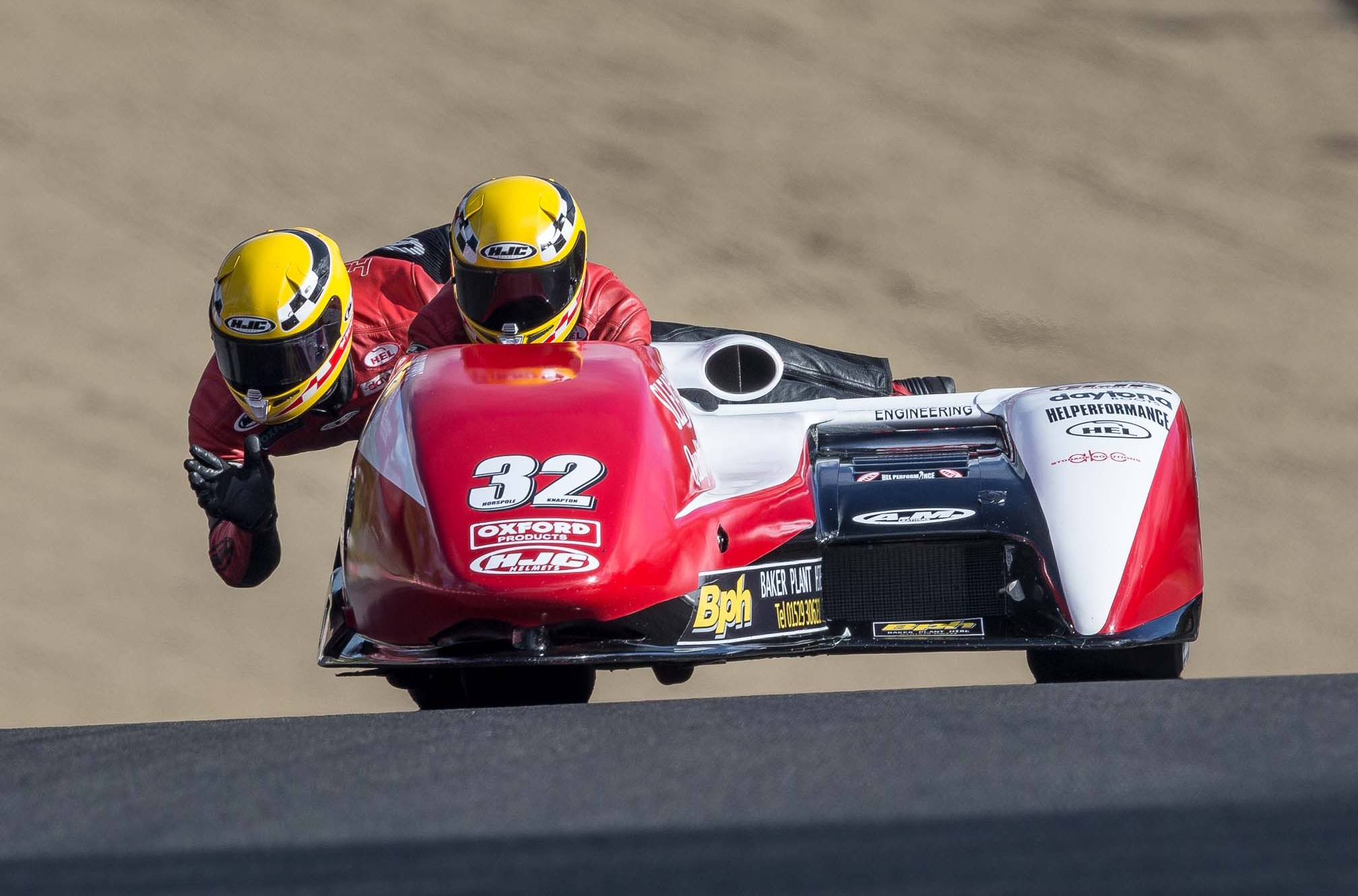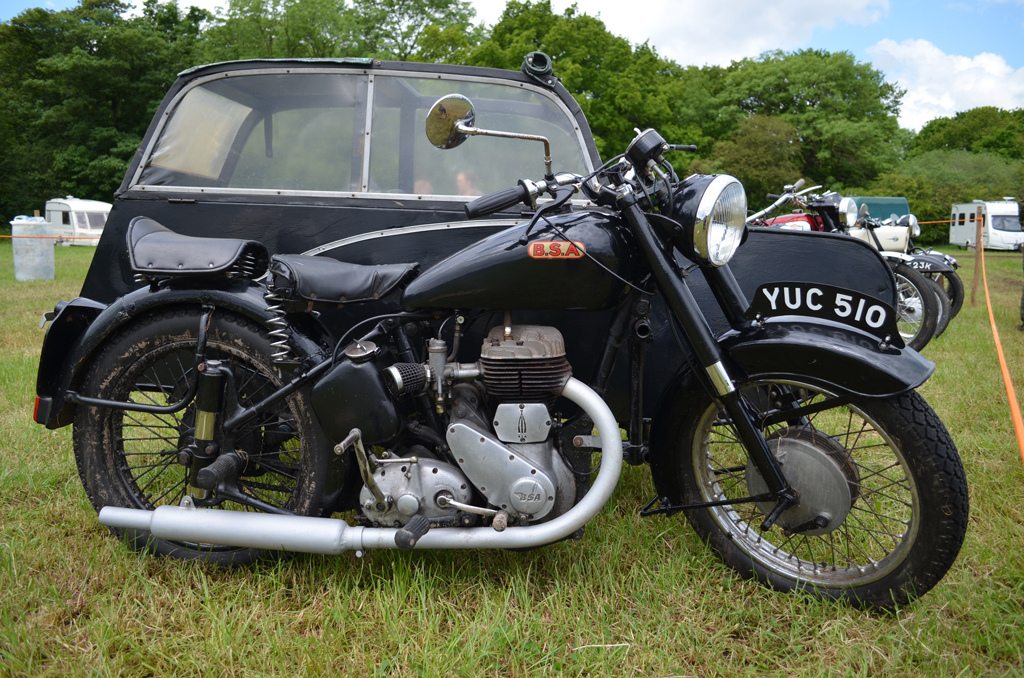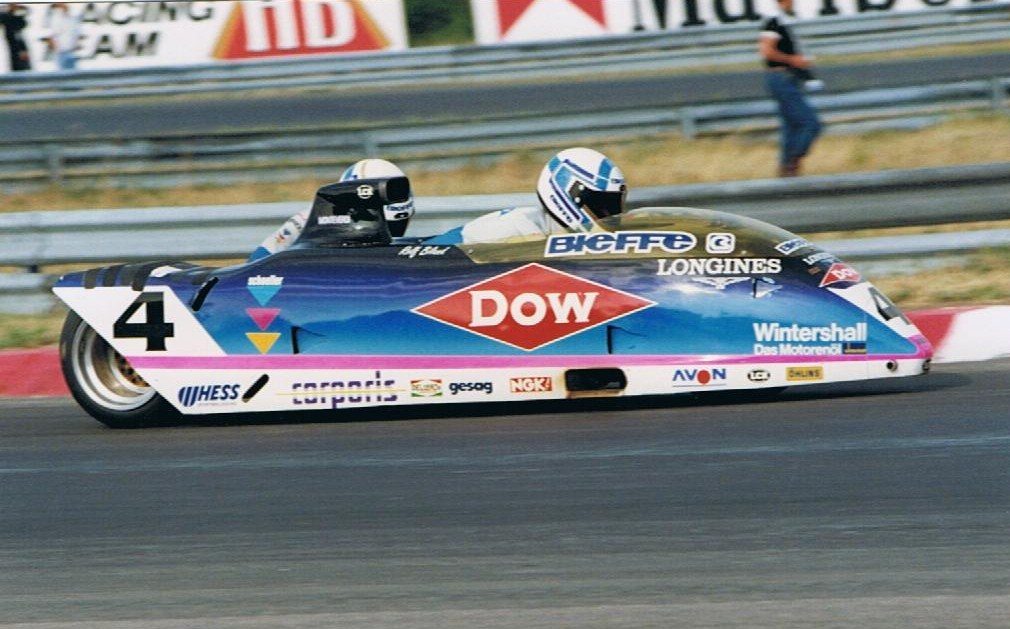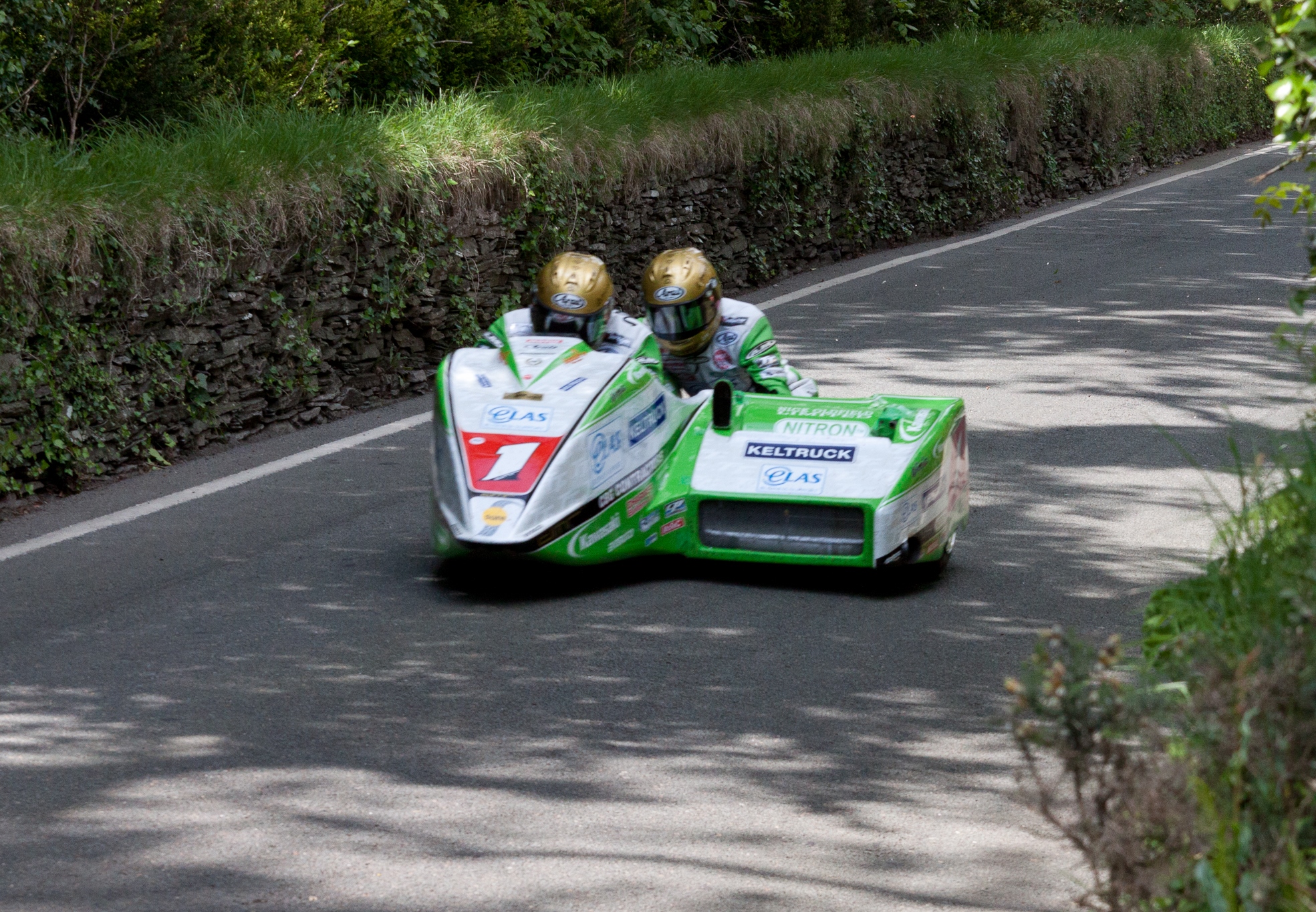For almost half a century, sidecars were an integral part of the World Motorcycling Championships, a mainstay since the inaugural year of 1949, but it’s been a different story for the last twenty years and the World Championship is a shadow of its former self.
However, having overcome some dark, adverse years, the British scene is flourishing once more and, having been run at the premier BSB meetings for the last seven years, 2017 will see almost forty teams registered for the new, F1 season.

Early days:
The sidecar was seen as an integral part of transport in the 1940s and 1950s with a passenger’s chair simply being attached to an existing motorcycle and the likes of Norton and BSA ruled to begin with, British ace Eric Oliver taking four World titles between 1949 and 1954. For the next twenty years though, it was the German BMW manufacturer that dominated the sport with legendary names like Max Deubel, Fritz Scheidegger and Klaus Enders all becoming multiple World Champions.

By the 1970s, the two strokes were in the ascendancy and as they did, development and technology came to the fore more and more. Sidecars no longer resembled motorbikes and instead, had more in common with cars, namely Formula Three outfits, with sidecars using numerous components that adorned their four-wheel counterpart.
Purpose built chassis now housed the 500cc engines, the brainchild of engineers LCR and Seymaz with the long ‘worm’ outfits dominating the World and British scene with Rolf Biland, Egbert Streuer, Alain Michel, Werner Schwarzel and Britain’s very own Steve Webster on board.

The more traditional short wheelbase outfits were only competitive at the TT where they were still flying around the Mountain Course, Jock Taylor’s 108mph+ lap in 1982 still regarded as one of the greatest laps of all time. At the time, this was only 7mph down on the outright solo lap record belonging to Joey Dunlop.
Formula One v Formula Two:
The sport was moving further and further away from motorbikes, having more in common with cars and they were very much seen as the poor relation in the paddock, maintaining their place at a Grand Prix primarily for historical reasons alone.
When the Formula Two class came onto the scene in the mid-1980s, it gave the sport a shot in the arm, in the UK at least. It arguably saved racing at the TT, where speeds with the more powerful Open outfits were bordering on the dangerous with more and more incidents, whilst the British Championship races in the late 1980s and early 1990s were, more often than not the best of the day – seeing upwards of six outfits approach the Mallory Park hairpin was a sight to behold.
But, ultimately, it caused a major split in the sport with the best drivers spread across the classes with few, if any, doing both. The likes of Steve Webster, Steve Abbott and Barry Brindley focused on the Open class, at both World and British Championship level, with Dave Molyneux, Dave Saville and the Bells concentrating on the latter. One year saw the British Championship for each class decided over just three rounds as they alternated which one was present at each BSB (or Supercup as it was called then) round.
And when the newly created MCRCB revolutionised the BSB series in 1996, sidecars didn’t feature. With Dorna axing them at World Championship level too, cutting a Grand Prix race day to 500s, 250s and 125s, the end looked nigh.

New homes, false hopes:
For a while, the World Championship flourished at its new home, appearing on the same calendar as the World Superbike Championship but they were soon unwanted there too, being moved instead to World Endurance rounds and car race meetings.
In Britain, the F1 (Open) series found refuge in the MRO Championship, the next level down from BSB, whilst the F2 Championship was contested at various club race meetings around the UK, albeit still with the best F2 teams contesting each round.
British recovery:
Both stayed strong to their roots and values that had served them so well in the early days but whilst the World scene has never recovered, the opposite has happened in Britain and thanks to the dedication of a small, hard-working few, it’s become a key, and valued, part of the BSB support series once more.
Opinion is still divided as to which rules are the best – the World Championship, British Championship and TT all have different rules and regulations – so there’s still a split but the premier series in the UK is as professional, and as competitive, as it’s ever been.
It would have been easy for the sidecars to roll over and disappear after the trials and tribulations of the late 1990s/early 2000s when they were no longer wanted but it’s testament to everyone involved that they’re back performing on the biggest stage and in front of the biggest crowds.
Having started watching motorcycle races all over the world form childhood, Phil Wain has been a freelance motorcycle journalist for 15 years and is features writer for a number of publications including BikeSport News and Classic Racer, having also been a regular contributor to MCN and MCN Sport. He is PR officer for a number of teams and riders at both the British Superbike Championship and International road races, including Smiths Triumph, Quattro Plant Kawasaki, John McGuinness, Ryan Farquhar and Keith Amor. He is also heavily involved with the Isle of Man TT Races, writing official press releases and race reports as well as providing ITV4 with statistical information.